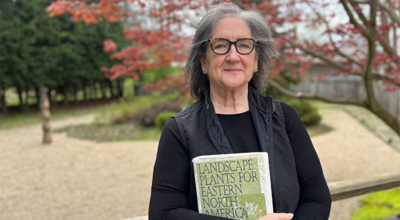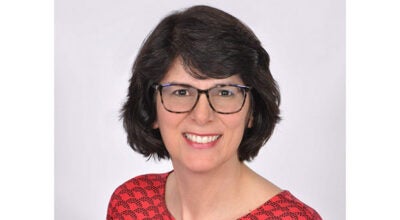Eastside school visits SMC
Published 9:32 am Monday, February 1, 2016
Southwestern Michigan College hosted 66 3-8 graders from Niles Community Schools’ Eastside Connections STEM Academy, a New Tech partner devoted to project-based learning on Jan. 29.
Half the students went with Deirdre Kurtis, who teaches biology and environmental science, for an accurate measurement exercise employing a variety of glassware, including test tubes, beakers and graduated cylinders.
Mid-morning they switched with chemistry professor Dr. Douglas Schauer, who introduces them to chromatography techniques separating mixtures using rubbing alcohol, paper strips, peanut M&Ms and Spree candies.
“The experiment you’re doing is the same kind the FBI would use to figure out where a pen came from because each manufacturer has its own ink recipe. If someone leaves a ransom note, they can figure out whether it was a Bic or a Paper Mate. In the olden days, they used this technique to predict if someone had a disease. My organic chemistry students this past week used this technique to separate dyes in spinach. You can also analyze medicine to find out if it’s pure. That was one of my jobs as a graduate student.
“Water, milk, chicken wings, ice cream and you are all composed of chemicals,” Schauer said. “If you understand chemistry, you can understand how the entire universe works.”
Schauer showed ECS SMC’s new $250,000 lab where students conduct chemical research they presented at a national conference in Denver.
“Professors walked by asking them which graduate school they were from,” Schauer said. “That tells you the level of work they’re doing. Most of my students are able to get jobs immediately.”
“We actually try to discover brand-new things, like ways to purify water,” he continued. “At my house I have a Brita filter, but they’re too expensive for most of the world. We found cilantro and parsley pulls dangerous stuff out of water. I took a group of students to Mexico, where cilantro grows in backyards.”
“Stuff we have allows us to measure how much metal, including lead, are present in water,” Schauer said, since students are well-aware of Flint’s water woes. “That instrument heats up, burns minute samples and gives off different colors, like fireworks.”
Schauer also demonstrated the tablets SMC students use to log on for lab work.
STEM educates students in four specific disciplines — science, technology, engineering and mathematics.
Eastside students work side by side with presenters from the University of Notre Dame Joint Institute of Nuclear Astrophysics, Notre Dame’s DNA Learning Lab, Notre Dame Energy Project, Donald C. Cook Nuclear Plant, WNIT-PBS, WNDU-NBC, Berrien RESA and SMC.
The program engages students in fun, hands-on STEM lessons, games, activities and contests.
Through STEM club, students gain practical teamwork and leadership skills.
Their confidence and engagement in STEM increases, as well as their motivation to study STEM and enter good-paying STEM careers.
Angie Lundberg of Buchanan is at SMC’s William P.D. O’Leary Building on the Dowagiac campus with her two sons.
“Our school had 250 students when 120 K-8 applied to science club,” she said. “The plan was to do four events after school in three groups” divided by age. “This year, to make it more manageable, we did third through eighth grade and eliminated the little kids. We hired the ETHOS (Encouraging Technology and Hands-On Science) Science Center (Sci2Go) Bus,” a joint effort with Elkhart Community Schools.
The mobile science laboratory contains state-of-the-art technology, including a computer for each of six lab stations.
Students learned about moon phases carving Oreo white cream filling.
“Next week they do the DNA lab,” Lundberg said. “They get to make egg-drop contraptions in a four-story atrium. A lady from Kalamazoo Valley Museum came and talked about comets, then they make one with dry ice. We have two STEM clubs with more than 60 in each.”
Lundberg majored in political science and history in college, then worked on Capitol Hill.
“I was not good in science or math, so I took the requirements and was gone,” Lundberg said. “I want my kids by high school to know they have choices and not feel these subjects are scary.”
“Math is the language of science,” said Andrew Dohm, who teaches physics and math after studying mechanical engineering. “Don’t be afraid of math. Everybody can do it, they just understand it differently. Ask questions. Wonder about things. Explore. Be curious about how we know. It leads to interesting careers.”






